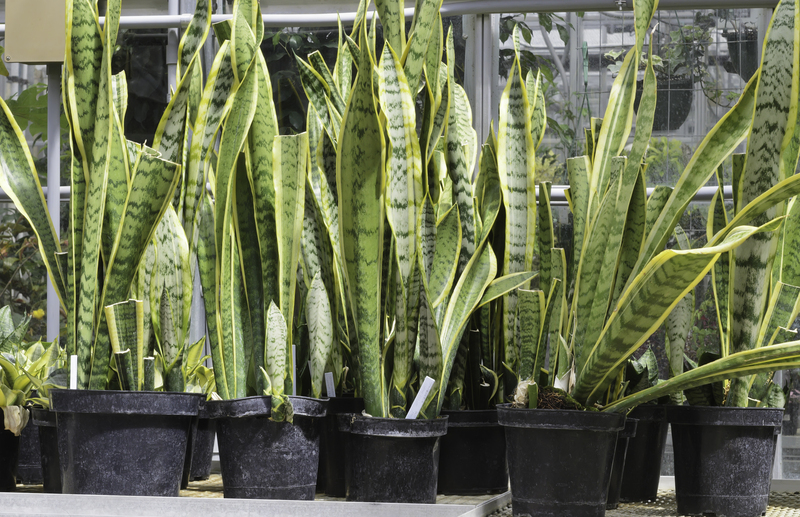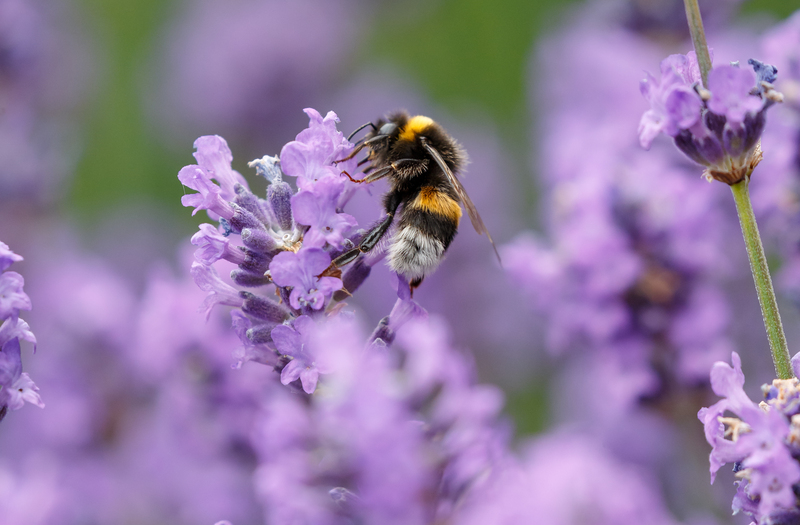Dog-Proofing Your Garden: A Guide to Success
Posted on 04/07/2025
For every dog-loving gardener, maintaining a beautiful outdoor space can pose unique challenges. Dogs are playful, curious, and sometimes a bit too adventurous for their own good (and yours!). Whether you're worried about chewed roots, dug-up plants, or your pup's safety, dog-proofing your garden is key to enjoying an inviting, thriving environment for both you and your furry friend. Read on for a detailed, reader-friendly guide packed with practical tips and strategies for garden dog-proofing success.
Why Dog-Proofing Your Garden is Essential
- Protects your plants: Dogs love to dig and can quickly uproot your favorite flowers or vegetables.
- Keeps your dog safe: Many common garden plants and chemicals are toxic to canines.
- Prevents escape: Curious pups may try to tunnel under or leap over fences, putting them at risk.
- Makes garden maintenance easier: Dog-proofed spaces mean fewer repairs and replacements.

Understanding Your Dog's Behavior in the Garden
Before you start making your garden dog-safe, it's important to consider what motivates dogs to dig, chew, or jump. Common reasons include:
- Natural hunting or foraging instincts
- Boredom or excess energy
- Seeking cool spots to lie down
- Exploring interesting scents
Observing your dog's habits can help you tailor your approach for maximum effectiveness.
Setting Up Dog-Proof Fencing and Boundaries
Choosing the Right Fence
A secure, well-constructed fence is the cornerstone of any dog-friendly garden. Here's what to consider:
- Height: Most dogs can easily clear low fences. Aim for a minimum of 4-6 feet depending on breed and agility.
- Material: Chain link, wood, or vinyl are durable and difficult for dogs to chew through. Avoid gaps or climbable structures.
- Underground reinforcement: Install chicken wire or concrete blocks along the fence base to deter digging escapes.
Secure Gates & Entry Points
- Use self-closing or self-latching gates to prevent accidental escapes.
- Check gates regularly for gaps or weak spots that might tempt a determined dog.
Selecting Dog-Safe Plants for Your Garden
Many common landscaping plants are toxic to dogs if ingested. When dog-proofing your backyard or front yard, consider swapping out risky plants for safe alternatives. Here are some examples:
Plants to Avoid
- Tulips
- Daffodils
- Sago palm
- Oleander
- Azalea
- Foxglove
Dog-Friendly Plants
- Sunflowers
- Marigolds
- Snapdragons
- Roses (without pesticides)
- Basil or Rosemary (for edible gardens)
Always check with your veterinarian or local gardening expert if you're unsure about a specific plant's safety.
Creating Dig-Free Zones
Since dogs love to dig, especially in freshly tilled soil or mulch, it's wise to provide an alternative so they leave your prized plants alone.
Tips to Prevent Destructive Digging
- Provide a digging pit: Designate an area filled with loose dirt or sand. Bury treats or toys to encourage digging only here.
- Block off freshly planted beds: Use decorative fencing, raised beds, or chicken wire to protect vulnerable areas.
- Discourage return to dug areas by adding rocks, pinecones, or safe deterrents (like citrus peels) where digging is unwanted.
Safe Mulching and Ground Cover
Choosing the right materials for your garden surface is crucial for pet safety and plant protection.
- Avoid cocoa mulch. It smells like chocolate and is dangerously toxic to dogs.
- Opt for shredded bark, pine straw, or untreated wood chips. These are generally safe if ingested in small quantities (but watch for chewing).
- For ground cover, consider dog-friendly grasses like Bermuda, Zoysia, or fescue which can withstand running and digging.
Organic & Non-Toxic Lawn Care
Traditional garden fertilizers, weed killers, and pest control products can be dangerous for pets. Dog-proof your yard with these tips:
- Choose organic, pet-safe fertilizers and always follow application instructions.
- Use diatomaceous earth or neem oil for natural pest control.
- Avoid using slug bait or rodent poison anywhere your dog can reach.
- Water treated areas thoroughly and keep pets off the grass until dry.
Protecting Raised Beds and Delicate Plants
Practical Barriers
- Install small fences or chicken wire around beds that need extra protection.
- Use lattice panels or garden arches covered with climbing plants to act as barriers.
- Netting can be an effective deterrent for nosy paws.
Strategic Planting
- Put delicate or valuable plants in hard-to-reach places--hanging baskets, wall planters, or elevated pots.
- Line your borders with thick, bushy plants to form a natural barrier.
Designing Play Zones for Your Dog
Help your pet burn off energy without damaging the garden by creating a stimulating environment just for them:
- Allocate space for fetch, tug-of-war, and supervised play.
- Install tunnels, logs, or climbing structures for agility and entertainment.
- Provide shade and fresh water to keep your dog comfortable outdoors.
Regular Maintenance: Keeping Your Garden Dog-Proof
Consistent checks and positive reinforcement are key to sustaining a safe, healthy space:
- Inspect fences and gates weekly for weak posts or holes.
- Keep tools, hoses, and chemicals out of reach.
- Repair or replace any damaged barriers promptly.
- Reward your dog for respecting garden rules with treats and praise.
Train your pup with cues like "leave it" or "stay" to support boundaries in the garden.
Dealing with Garden Pests - Safely!
Pesticides and repellents often pose hidden risks to dogs. For a truly dog-safe backyard, try these pet-friendly alternatives:
- Encourage beneficial insects, birds, or toads to act as natural pest controllers.
- Hand-pick pests like snails, slugs, or beetles instead of using poison.
- Essential oils can deter pests but be careful; some (like tea tree oil) are harmful to pets. Always verify safe options.
Water Features, Ponds, and Pools - Dog-Proofing Tips
While many dogs enjoy splashing in water, garden ponds and pools can be risky. Take these precautions:
- Securely fence around ponds or pools or install a net for extra safety.
- Provide easy steps or ramps for your dog to get out if they fall in.
- Don't let standing water become a breeding ground for bacteria or algae, which can be toxic if ingested.
Enrichment Ideas for a Dog-Proof Garden
Boredom is a big reason dogs cause trouble in gardens. Keep your dog occupied with these enrichment activities:
- Rotate toys or chew items to retain interest.
- Use a snuffle mat or treat-dispensing toys outside.
- Set up a trail with safe scents or planted herbs for sniffing exploration.
- Design a "doggy sandbox" area where digging is encouraged and rewarded.

FAQs: Dog-Proofing Your Garden
- Q: How do I stop my dog from eating plants?
A: Remove toxic plants, use taste deterrent sprays, and redirect interest with approved chew toys. Consistent training is essential. - Q: Are lawn treatments safe for dogs?
A: Always check labels for pet safety. Use organic, natural products, and keep pets off the treated area until completely dry or as directed. - Q: Can I have a vegetable garden with dogs?
A: Yes, as long as you secure the area with barriers and supervise your dog. Avoid onions, garlic, and chives, which are poisonous to dogs. - Q: My dog keeps escaping. What can I do?
A: Reinforce fencing, block digging spots, and train your dog to understand yard boundaries. Boredom is a common cause, so provide plenty of stimulation and companionship.
Conclusion: Enjoying a Dog-Proof Garden
Dog-proofing your garden doesn't mean sacrificing beauty or fun--it's about creating a harmonious space for everyone to thrive. With a thoughtful combination of fences, dog-safe plants, strategic barriers, and enrichment, you can have a gorgeous garden and a happy, healthy dog. Start small, adapt solutions to your yard and pet, and enjoy the peace of mind that comes with a truly dog-friendly outdoor oasis.
Ready to transform your backyard into a pet-safe paradise? Share your dog-proofing wins and tips in the comments!

